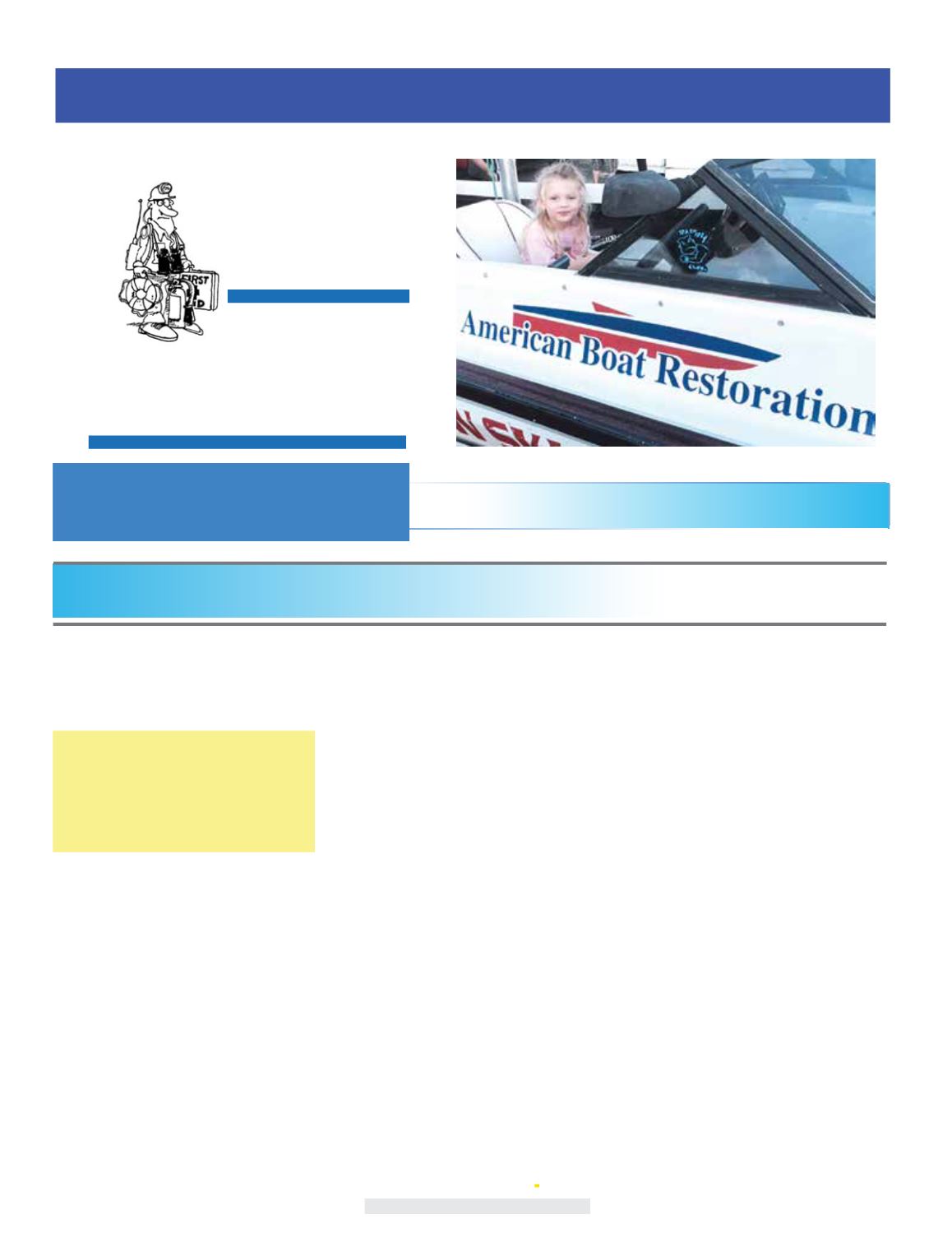

Holiday 2018
64
Disponible en línea en español.
Dave Weakley is the owner of American Boat Restoration and has been helping
Northeastern boaters keep their boats in fine trim and good repair for over 40 years.
Dr. Gel
by Dave Weakley
Ask
“Email me or call me with your questions! I’ll be happy to help you out”
americanboatrestoration.com / email:
boatrepair@aol.com/ Office: 413.665.7424 / Cell: 518.577.7799
2 0 0 6 • 1 2 Y e a r s w i t h D r . G e l • 2 0 1 8
Take the
Doctor’s Advice
“My boat has gelcoat cracks on the deck
and hull. There are also little bumps on the
hull below the waterline, some have broken
open; can water get into the fiberglass?
What should I do?”
Carl D. – Malta, NY
T
he gelcoat on a boat is a polyester based
resin; it is a very porous material. It never
stops curing; the older it gets the more brittle it
becomes. The constant exposure to moisture, dirt
and UV sunrays can break it down. The “little
bumps” you have are called osmotic blisters and
have developed from exposure to wetness. They
can break open and along with the cracks a.k.a.
crazing, will allow water seepage and ultimately
penetrate into the fiberglass.
What a lot of people don’t realize is that gelcoat
is not waterproof. Moisture can seep into the
gelcoat even if the surface is not broken. If enough
moisture gets into the laminate the structural core
materials will eventually be vulnerable to damage
and the construction of the boat could become
compromised.
Carl, this is a great question….My best advice to
you is to have the cracks and blistering repaired as
soon as possible and to shield the boat from the
elements!
Gelcoat should always have a protective coating.
ALL of it! ALL the time!
Preventive
Medicine
A
bove the water line your entire boat should
be regularly cleaned and rubbed with a good UV
shielding wax; your choice or we recommend two
products Collinite #885 Special Heavy Duty Fleet
Wax or what I use, Collinite #845 Liquid Insulator
Wax. Both are great products made in Upstate NY
and are available on line or at many local marine
supply stores. All season long you should regularly
clean and WAX your boat! I stress the importance
of cleaning your boat before you wax it, because
dirt is also a culprit to the deterioration of gelcoat.
I can not emphasize enough the importance of
keeping your boat waxed! Apply it before it is
stored for the season, it’ll make spring prep a
whole lot easier
Below the water line - If your boat is new or old
and in the water all season long you will want to
reduce the development of osmotic blistering
and crazing. To do this you need to protect your
hull with a coating system – Epoxy Barrier coat
along with an optional antifouling paint should
be applied. There is a laundry list of the types
& brands to choose from and it is essential to
choose the right one. Note- Bottom paint does
not need to be applied over Epoxy Barrier.
Bottom or anti-fouling paint slows the
growth of algae, critters, barnacles, etc thus
producing better speed and boat performance.
It’s important to know that bottom paint alone
will not protect the hull from water absorption
exposing it to potential osmotic blistering.
We have written many articles about how to
protect a hull; it’s a significant topic and worth
repeating especially for new boat owners or those
that missed previous articles.
Applying epoxy barrier coat on the bottom of
your hull is like buying insurance especially and
most importantly if you keep your boat in the
water all season.
Epoxy Barrier Coating
is like the name
implies - it is a two part epoxy that protects
hulls from water absorption into the gelcoat. It

















